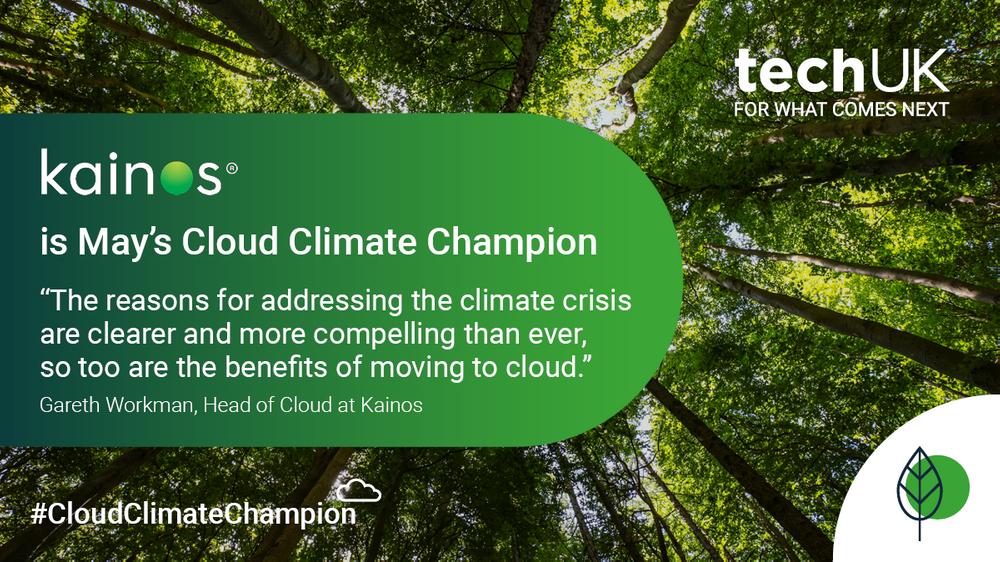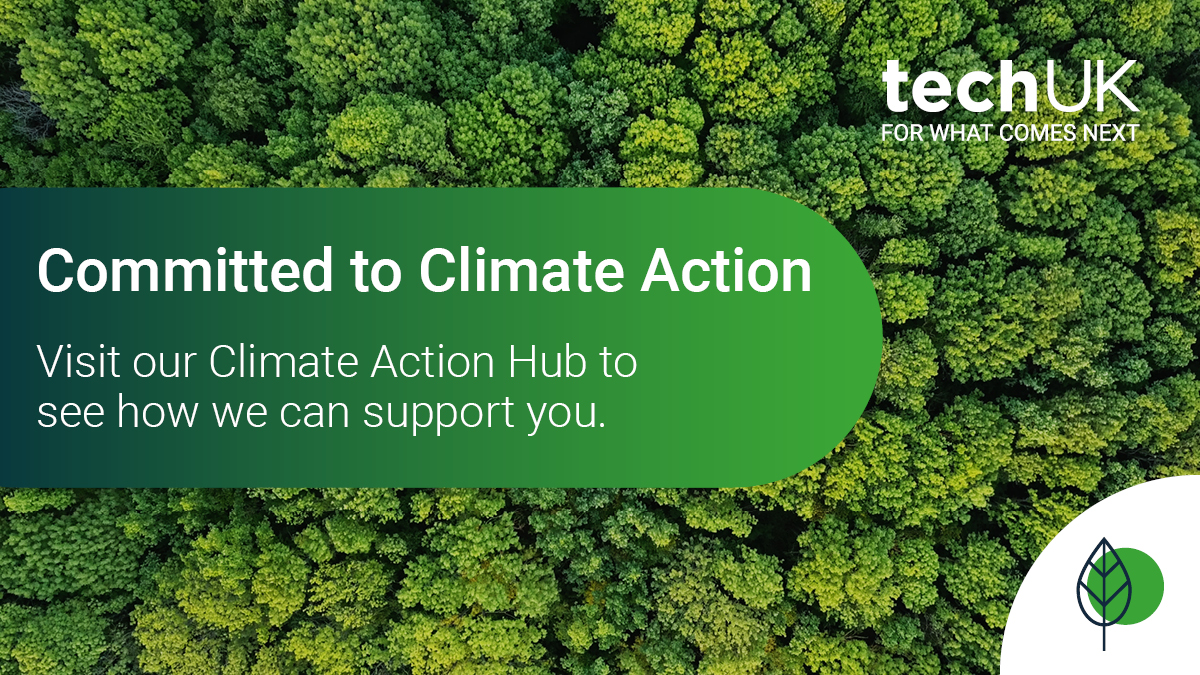How harnessing cloud can help drive sustainability (Guest Blog from Kainos)

Author: Gareth Workman, Head of Cloud at Kainos and Chair of techUK's Cloud Leadership Committee
The need to be more sustainable is an ever-increasing priority for many organisations. For Kainos, sustainability is more than just a buzzword. We are committed to making our contribution and impact to keeping global temperatures inside the +1.5° C safe zone proposed by The Paris Agreement. So, we’ve established and embedded a rigorous programme to reduce our carbon footprint, offset emissions and made a pledge to work with our partners and suppliers to ensure that operating sustainably is front of mind in everything we do.
One of the areas where organisations can achieve a quick win for sustainability is by adopting public cloud. Research by Microsoft has found that public cloud can be up to 93% more energy-efficient and 98% more carbon-efficient than on-premises alternatives.
Those incredible figures demonstrate that hyperscale cloud providers such as AWS, Microsoft and Google have invested heavily in minimising their carbon footprint – and that this investment is already paying off. All three have already made their carbon ambitions well known:
- Microsoft is committed to transitioning to 100% renewable energy by 2025, being carbon-negative by 2030 and reducing all historic emissions by 2050.
- AWS is committed to transitioning to 100% renewable energy by 2025 and reaching net-zero carbon emissions by 2040.
- Google has been carbon neutral since 2007 and is committed to 100% renewable energy by 2030.
We also know that there is only so much that cloud providers can do. So, how do you use cloud in a responsible way?
Check out the tips below to learn more on how you can reduce your footprint even further once you make the move to cloud:
Use only what you need
Sounds like common sense but harness the elasticity of cloud to provision what you need, when you need it, to meet demand. Remember to scale down as demand reduces.
Leverage platform abstractions
Software as a Service (SaaS), Platform as a Service (PaaS) and Function as a Service (FaaS) enable the cloud providers to operate more efficiently compared to dedicated self-managed IaaS infrastructure, thus reducing your energy consumption and carbon impact.
Avoid dedicated instances that reduce shared tenancy
Reserving an entire host to yourself increases energy waste and effectively replicates your inefficient, on-premise hosting approach to cloud. The efficiency of the cloud comes from enabling others to share, so trust your cloud provider to ensure workloads are separate when sharing hardware. If you’re not confident, make a point of asking your provider for reassurances.
Modernise and optimise application code to enable rapid elasticity and minimise execution time.
Split the application up into smaller, logical scalable units, historically we have tended to build around larger multi-use building blocks. This is especially important in FaaS models, which are charged in millisecond increments.
Leverage Auto Scaling and Spot Instance functionality with IaaS
This automatically minimises non-essential demand for virtual server instances. For example, in overnight batch processes or any activity that isn’t time sensitive.
Automate scheduled shutdowns
Use automation to power down non-production environments and, if possible, even production environments when not required. For example, running services only during core business hours of Monday to Friday would automatically reduce energy consumption and carbon by circa 70% - and that’s before optimising to run on the cloud platform.
Configure data retention policies to purge unnecessary data
If you must retain datasets for long-term legal or compliance purposes, consider moving them to cold archival storage.
By now a lot of practical theory has been covered, however, we have some examples that bring the positive outcome of cloud adoption to life.
Two of our customers and sustainability pioneers adopted public cloud to drive sustainability and their stories are shared below.
Working with a global NGO, our Kainos team helped them to lower operational costs, increase system security, and reduce their carbon footprint.
We began by helping to create and execute a cloud-first strategy. We then got to work migrating three data centres to the public cloud.
We completed the project in just 6 months, applying our expertise in modernisation and data to reduce the organisation’s carbon emissions by 92%.
That’s the equivalent of recycling 25,274 bags of rubbish a year rather than sending them to landfill.
We also helped a UK Government department who were struggling with ageing physical hardware, operating systems and applications, in two on-premises data centres.
We adopted PaaS to help them modernise their infrastructure, consolidate the IT estate and migrate to the cloud. This strategy reduced support overheads and closed the data centres, lowering property costs.
We estimate that this migration to the cloud cut operational carbon emissions by 94% - the equivalent to planting 86,000 seedlings or the carbon sequestered in 629 acres of forest.
So just as the reasons for addressing the climate crisis are clearer and more compelling than ever, so too are the benefits of moving to cloud. Not least because of how quickly it can positively impact on your carbon emissions and overall environmental impact.
Finally, if you would like to understand what cloud can do for your sustainability journey, we have created our Cloud Carbon Reduction Calculator. This free tool will help you easily see the carbon reduction impact that a cloud migration would unlock for your organisation, our cloud experts will also provide a report and hands-on guidance that will help you develop actionable plans to optimise emission reductions when moving to cloud.
Cloud Climate Champions
This monthly series will showcase the commitment of our members to a more sustainable net-zero future.
techUK - Committed to Climate Action
Digital transformation is critical to the decarbonisation journey of organisations in every sector. Across supply chains and sectors, industries are converging with tech partners to find innovations that reduce carbon emissions and unlock efficiencies that drive down energy use. techUK focuses on the application of emerging technologies and data-driven decision making in traditional forms of infrastructure to deliver innovative environmental outcomes. For more information on our Climate, Environment and Sustainability Programme, please visit our Climate Action Hub and click ‘contact us’.



